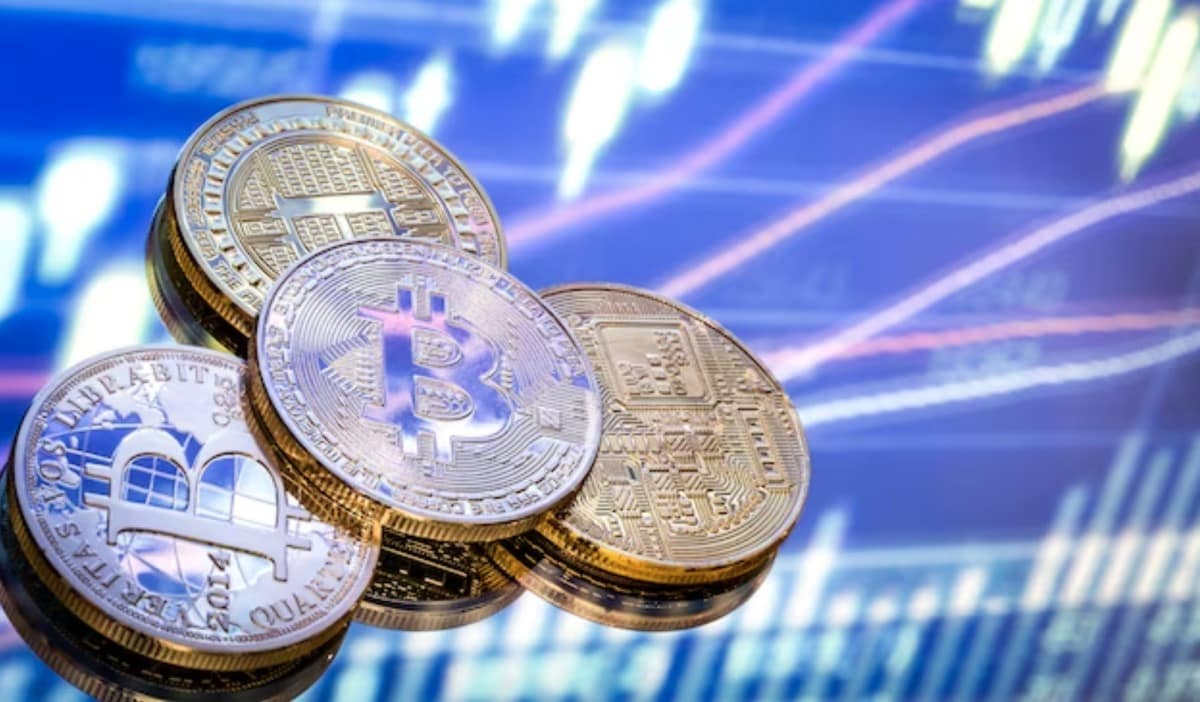Fiat Money vs Cryptocurrency: What's the Difference?

As history has proven, money is an evolving asset. Regardless of the form, the purpose of using money remains the same: to pay for the products or services that make your life easier or are essential for your well-being. Although most of us still use fiat money, cryptocurrency is rapidly gaining demand among individuals in different spheres of life. Although some may assume the answer is avid, "What's the difference between fiat and crypto?" This article explains fiat money and how cryptocurrency differs from fiat money.
Fiat Money
To begin discussing the fiat money vs crypto difference, we'll explain fiat money. Let's find out how fiat money is created and consider several benefits of fiat money.
What is Fiat Money?
To begin with, we'll explain fiat money. Paper money is called fiat money because the government issues it, and its value is not backed by gold or any other physical commodity. The term "fiat" originates from Latin and means "let it be done"," which is commonly used in the sense of an order.
Fiat money has value because governments order it to be accepted to pay off debts. An example of fiat money is the US dollar, the value of which is based on supply and demand in the market.
Unlike cryptocurrency, fiat money can be subject to inflation. It means the real buying power of fiat money can decrease while its face value remains the same. Another concern is the hyper-inflation, which the government can create by over-printing fiat money. As you may guess, this isn't the case with cryptocurrency.
Generally, the value of fiat money is derived from central banks' decisions rather than through the reserves of gold or other assets. Today, the term "fiat money" is commonly used to distinguish cryptocurrency from traditional money.
How does fiat money work?

Fiat money operates based on the trust and confidence in the government that issues it. How does fiat money work? Here's a breakdown:
- A country's central bank, such as the Federal Reserve for the US dollar, is responsible for issuing fiat money.
- Unlike commodity currency, the value of fiat money isn't backed by any physical commodity but by the trust and confidence in the issuing government. It's not tied to the value of a physical commodity like gold or silver.
- The government declares fiat money as legal tender, ensuring its acceptance as a form of payment within the country.
- Through its central bank, the government controls the supply by printing new money or withdrawing it from circulation, exerting significant economic influence.
- As fiat money isn't tied to physical reserves, it faces the risk of losing value due to inflation or even becoming worthless in the case of hyperinflation. Conversely, deflation can increase the value of money.
- The value of fiat money is mainly dependent on the principle of supply and demand, influenced by the performance of the issuer's economy. The money may lose value if confidence in a nation's currency wanes.
The effectiveness of fiat money hinges on the stability of the issuing government and the trust of its users.
Control and Issuance of Fiat Money
Comparing fiat money vs cryptocurrency, it's worth noting that fiat money is issued and regulated by central banks within each country and supranational centrals like the International Monetary Fund, the European Central Bank, the European Investment Bank, and similar international organisations.
The value of fiat money is determined by the balance of supply and demand and the stability of the issuing government rather than being backed by a specific commodity. This allows central banks to regulate the economy by controlling the amount of printed money.
One risk of fiat money is the potential for governments to overprint, leading to hyperinflation. Additionally, if public trust in a nation's currency diminishes, the money may lose value. This differs from a currency backed by gold, which holds intrinsic value due to its demand in jewellery, decoration, electronics, computers, and aerospace vehicles.
In the United States, the supply of dollars is managed by the Federal Reserve, while the European Central Bank oversees the supply of the euro as a common currency. These are among the most widely recognised fiat currencies.
Pros and Cons of Fiat Money
To understand how cryptocurrency is different from fiat money, let's discuss the major benefits of fiat money, as well as drawbacks.
Benefits of fiat money:
- Fiat money provides central banks with increased control over the economy by enabling them to regulate the amount of money in circulation.
- It is also more cost-efficient to produce than commodity-based money.
- Fiat money offers governments flexibility and enables central banks to adapt to economic conditions.
- Unlike commodity-based money, fiat money isn't constrained by the scarcity of a physical commodity such as gold.
Drawbacks of fiat money:
- One risk is inflation, which occurs when governments print excessive currency, leading to hyperinflation.
- Fiat money's stability is tied to government policies and is vulnerable to inflation risks.
- It can contribute to the formation of economic bubbles.
- The value of fiat money depends on the trust and confidence people have in a nation's currency. If the former is lost, the currency loses its value.
Cryptocurrencies
Let's proceed with our fiat money vs cryptocurrency and discuss the latter. What is cryptocurrency?
What is Cryptocurrency?

Cryptocurrency is a digital or virtual currency that uses cryptography for security. Unlike fiat money, it exists in an online database and operates as a decentralised peer-to-peer system. This means that transactions can occur directly between users without the need for intermediaries like banks. Furthermore, it's not governed by a central authority or government, resulting in a fixed supply and increased volatility compared to traditional fiat currencies. The most popular examples of cryptocurrency are Bitcoin (BTC), Ethereum (ETH) and Tether (USDT), which are the leaders of the charts.
Blockchain Technology and Decentralisation
First, let's explain the cryptocurrency blockchain's meaning.
Blockchain is a distributed database or ledger shared among a computer network's nodes. Its main role is maintaining a secure and decentralised record of transactions, especially in cryptocurrency systems. Blockchains ensure the immutability of data, meaning it can't be altered, and have been widely used beyond Bitcoin, such as in various cryptocurrencies, decentralised finance (DeFi) applications, non-fungible tokens (NFTs), and smart contracts.
Decentralisation in blockchain involves transferring control and decision-making from a centralised entity to a distributed network. This shift aims to reduce the level of trust among participants and prevent any single entity from exerting excessive authority or control over the network. Decentralisation fosters a trustless environment, enhances data reconciliation, minimises vulnerabilities and optimises resource distribution.
Learning what DeFi means in crypto and the blockchain cryptocurrency meaning should help you better distinguish the cryptocurrency vs fiat currency difference.
Issuance of Cryptocurrencies and Mining
Cryptocurrency mining is the process of verifying and adding transactions to the public ledger, known as the blockchain, and releasing new cryptocurrency. Here's a breakdown of how it works:
- The initial step involves taking pending transactions from the memory pool and running them through a hash function to generate a fixed-size output called a hash.
- A mining node collects unconfirmed transactions from the memory pool and organises them into a candidate block, which the miner then attempts to convert into a valid, confirmed block.
- Miners must solve complex mathematical problems that demand significant computing resources. Successfully mined blocks result in a block reward comprising newly created cryptocurrencies and transaction fees.
The issuance of cryptocurrencies refers to the creation of new units, which originate from cryptocurrency miners and circulate among investors. These coins can be stored in a wallet, traded on an exchange or even burned. However, most cryptocurrencies have a maximum limit on their existence. For instance, Bitcoin has a cap of 21 million coins.
Crypto miners utilise specialised hardware such as application-specific integrated circuits (ASICs) and graphics processing units (GPUs). Anyone with sufficient computing power and an internet connection can choose to mine cryptocurrency.
Pros and Cons of Cryptocurrencies
As we continue discussing how cryptocurrency is different from fiat money, let's highlight some of the major pros and cons of digital currencies.
Advantages:
- Decentralisation. Cryptocurrencies operate independently of government controls, making them resistant to interference.
- Anonymity. Transactions are shielded, protecting personal information through the use of virtual identities.
- Security. Cryptocurrencies offer heightened security measures.
- Low Transaction Costs. Most cryptocurrency transactions are either free or incur minimal fees.
- Speed of Exchange. Cryptocurrencies enable rapid transactions.
- No Third-Party Involvement. Payments do not require third-party approval, eliminating payment delays.
Disadvantages:
- Price Volatility. The value of cryptocurrencies can fluctuate significantly.
- Lack of Regulation. The absence of regulation can result in potential misuse.
- Technical Barriers. Some users may encounter difficulties in understanding and utilising cryptocurrencies.
- Use in Illegal Activities. Cryptocurrencies can be exploited for illicit purposes.
- High Energy Consumption. Cryptocurrency mining activities consume substantial amounts of energy.
Key Differences between Fiat Money and Cryptocurrencies

Regarding the fiat vs cryptocurrency difference, the primary distinction between fiat money and cryptocurrencies lies in the fact that governments back fiat currency, whereas cryptocurrencies do not require government backing. Fiat money's stability enables central banks to regulate against recession and inflation, allowing for better management of economic variables such as interest rates and credit supply.
Cryptocurrencies, on the other hand, operate without the need for a central authority due to the use of blockchain technology. This decentralisation creates more efficient and less corrupt monetary systems, as users rather than central authorities govern cryptocurrencies.
It's worth noting that some governments have started incorporating cryptocurrencies into their national currency systems, with El Salvador adopting Bitcoin as legal tender and China developing a digital version of its national currency, the yuan.
The value of most cryptocurrencies is not backed by central banks but is determined by factors such as supply and demand. For instance, Bitcoin's value is influenced by market dynamics, with its supply being finite and governed by its underlying software.
While the value of specific cryptocurrencies, known as "stablecoins", is backed by a reserve of cash or other commodities to maintain stability, many investors still speculate on their future worth, leading to price volatility relative to traditional fiat currencies.
Choosing Between Fiat and Cryptocurrencies
When deciding between fiat money vs cryptocurrencies while choosing a better investment option, it's important to consider your specific needs and circumstances. Let's delve into the key factors to consider when making this decision, ensuring a rewarding and stress-free investment journey.
- Risk Tolerance. Your risk tolerance plays a pivotal role in the decision-making process. Cryptocurrencies like Bitcoin and Ethereum are known for their rapid value fluctuations. If you have a high tolerance for risk and are comfortable with market volatility, then cryptocurrencies might align well with your investment approach. Conversely, if you prefer stability and have a low risk tolerance, fiat currencies may be a more suitable choice.
- Investment Goals. Consider your investment goals carefully. Cryptocurrencies may be a good fit for long-term investments with potentially high returns. On the other hand, if you seek short-term investments or require liquidity, fiat currencies, like the US dollar and the euro, offer wide acceptance and ease of conversion.
- Market Conditions. Market conditions hold significant weight in this decision. Cryptocurrencies, a relatively new asset class, are prone to higher volatility influenced by various factors, such as regulatory changes and technological advancements. Conversely, fiat currencies are more stable but can be impacted by macroeconomic factors like inflation and government policies.
- Security. Security is paramount in any investment. Cryptocurrencies offer decentralised security through cryptography, but the absence of a central authority means limited recourse in case of loss or theft. On the other hand, fiat currencies are backed by governments and financial institutions, providing a higher level of security but still susceptible to fraud, theft, and hacking.
In conclusion, the decision to invest in fiat money vs cryptocurrency ultimately boils down to your circumstances and objectives. Evaluating factors such as risk tolerance, investment goals, and market conditions can empower you to make a well-informed decision regarding your superior investment option. While crypto presents the possibility of higher returns, it also brings more significant risk and volatility when compared to fiat. Conversely, fiat currency offers stability and widespread acceptance but may not deliver the same growth potential as crypto. Carefully weigh the advantages and disadvantages of each and determine which currency aligns best with your investment strategy.
Tags
Try our Bitcoin Cloud Miner and get additional crypto rewards based on your trading volume. It's immediately available upon registration.
Try our Bitcoin Cloud Miner and get additional crypto rewards based on your trading volume. It's immediately available upon registration.



